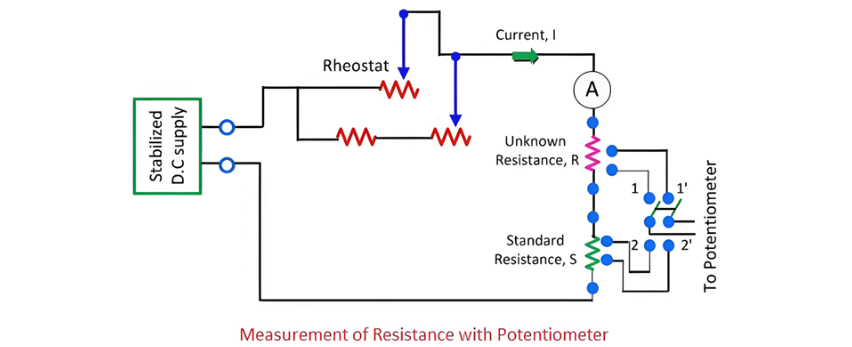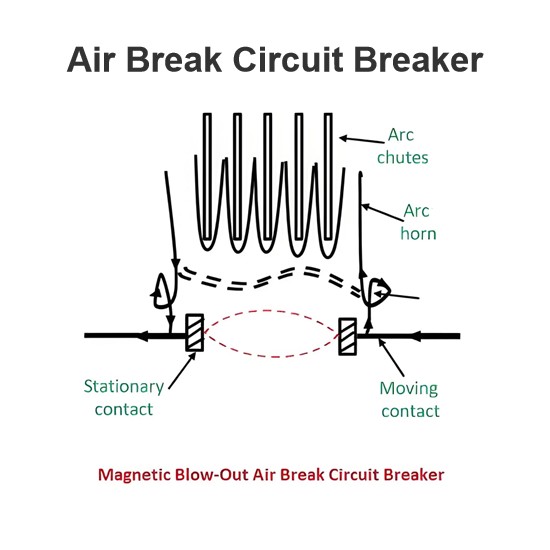DC Potentiometer Method for Resistance Measurement
The DC potentiometer method is employed to measure low-value unknown resistances by comparing them with a standard resistance. This involves measuring the voltage drops across both the known (standard) and unknown resistances, then determining the unknown resistance through comparison.
To understand this, consider the circuit diagram:
- R represents the unknown resistance to be measured.
- S is the standard resistance against which R is compared.
- A rheostat is used to control the magnitude of the current in the circuit.

A double-pole double-throw (DPDT) switch is incorporated into the circuit. When the switch is moved to position 1, the unknown resistance is connected to the circuit; when shifted to position 2, the standard resistance is connected instead.
Assume that with the switch in position 1, the voltage drop across the unknown resistance is Vᵣ.
and when it is in 2, 2 the voltage drop across the resistance is Vs
On equating the equation (1) and (2), we get
The accuracy of the unknown resistance depends on the value of the standard resistance.
Additionally, it relies on the consistency of the current magnitude during measurements. The circuit yields accurate results only if the current remains unchanged when measuring voltage drops across both resistances. An ammeter is included in the circuit to monitor the current passing through the resistors during readings.The current is adjusted such that the voltage drop across each resistance equals 1 volt.

















